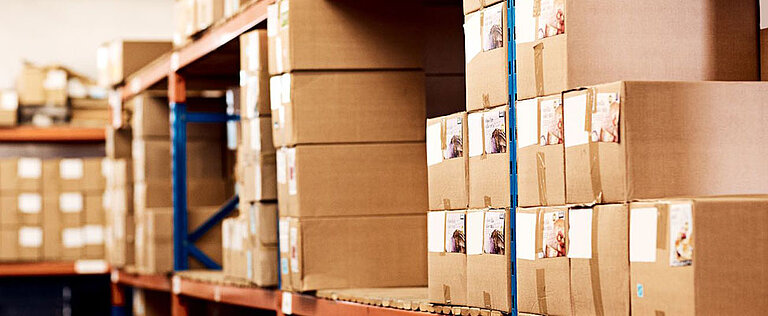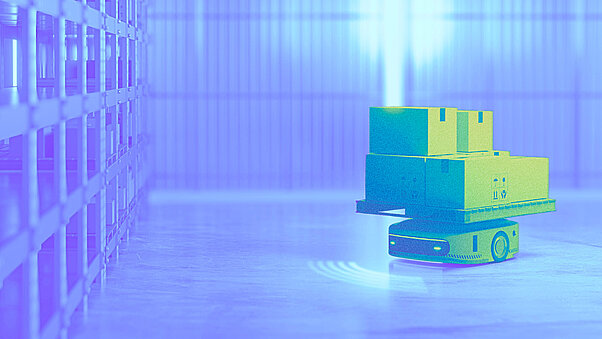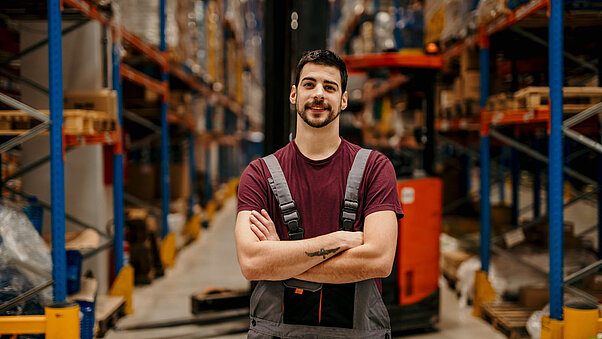General cargo transport explained simply: Everything you need to know

If you are involved in logistics and transport, you will quickly come across the term ‘general cargo’. What sounds a little technical at first is actually a central component of global goods transport. Here you can find out exactly what general cargo means, how it is used in everyday transport and why it plays such an important role for companies!
Definition: What exactly is general cargo and what types are there?
In logistics, general cargo describes all goods that are individually packaged and transported in small quantities. This classically includes parcels, crates, barrels or even pallets.
These are goods that are easy to handle and can be transported flexibly, as they do not necessarily have to fill the entire space of a means of transportation - such as oil in a tanker truck.
In contrast to large quantities, such as liquids or bulk goods (such as sand or grain), general cargo refers to items that are individually packaged.
General cargo covers many different types of goods:
Whether it's large machines, everyday goods or sensitive products - general cargo is an integral part of our daily lives.
- Small load carriers (SLC): These are smaller boxes, cartons or containers that can be easily stacked and transported. They are often collected on pallets to make transport easier. This method is often used for products such as electronics or consumer goods.
- Palletised unit loads: goods that are collected and transported on pallets. This makes loading and unloading easier and reduces the risk of damage. Typical examples are household appliances, building materials or machines that need to be transported stably and safely.
Groupage: This involves bundling general cargo from different shippers and transporting them together in one means of transport. This method is particularly practical for saving space and costs, as not every company always has enough goods to fill an entire lorry or container.
The groupage goods are collected, transported together and finally distributed to the respective destination.
Special cargo: Some goods require special care in logistics due to their characteristics. These include, for example, high-quality works of art, large machines or products with special storage conditions, such as chilled food.
Special packaging and transport conditions are often necessary to prevent damage or loss.

What role does general cargo play in transport and logistics?
General cargo plays a central role in the economy because many companies do not need to ship large quantities of goods at once. They therefore need a solution for smaller consignments, and this is where general cargo transport comes into play. Especially in globalised markets, where products come from all over the world, it is practical to ship many different goods together. By bundling shipments, companies save costs and make better use of the space in the means of transport, which saves money.
General cargo transport is particularly important for small and medium-sized companies that do not send full lorry loads every day. It enables them to ship their products efficiently and cost-effectively.
The challenges of transporting general cargo
Transporting general cargo requires a lot of planning because the goods being transported are often very different. Sometimes it is a large pallet with heavy machinery, sometimes small boxes with sensitive electronic devices. This brings with it a number of challenges:
- Packaging and securing: General cargo must be well packaged to prevent damage during transport. This is where pallets or special crates often come into play in order to stack and transport the goods safely.
- Storage: General cargo requires a great deal of flexibility in storage. Storage locations must be available that can accommodate both large pallets and smaller boxes. At the same time, everything must be stored in such a way that it is quickly accessible when it is needed.
- Handling and sorting: As general cargo is often shipped together with other goods, there are special warehouses in which the goods are temporarily stored and re-sorted. This handling process must be very well organised so that nothing is lost or damaged.
- Digital tracking: In modern logistics, it is important to always know where a consignment is at any given time. Thanks to digitalisation and tracking systems, consignments can be monitored in real time. This is particularly helpful for valuable or sensitive goods.
- Means of transport: General cargo is transported in various ways - whether by lorry, ship, plane or rail. Which means of transport is chosen depends on how quickly the goods need to arrive and how far away the destination is. So-called ‘intermodal transport’ is also often used, in which different means of transport are combined.
Groupage logistics: clever bundling of general cargo
A special part of general cargo transport is groupage logistics: here, smaller consignments from different senders are collected to be transported together. This not only saves costs, but also ensures that the means of transport are better utilised. The process works in three steps:
- Collection: The individual consignments are collected from the senders.
- Transport: The collected goods are then transported together over longer distances.
- Distribution: At the destination, the goods are split up again and delivered to the recipients.
This bundling makes general cargo transport particularly efficient.
General cargo vs. ‘Colli & Collo’ : What's the difference?
In English-speaking countries themselves (such as the UK or the USA), the terms ‘colli’ and ‘collo’ are not commonly used. In these countries, terms such as ‘packages’, ‘units’ or ‘pieces’ are used instead to describe packages.
In international logistics, however, ‘colli’ and ‘collo’ are quite common and widely used, especially in Europe and on freight documents such as the CMR consignment note. This is because these terms have become established as standard in certain documents and for European logistics processes.
- For example, English-speaking logisticians or freight documents may use ‘colli’ because it is common in certain international documents, but it is not the standard vocabulary for purely English-speaking use.
Nonetheless: General cargo and the terms colli or collo are often used together in the logistics sector, but they refer to different things!
General cargo generally describes the type of transport: it includes all goods that can be shipped individually or in small quantities - i.e. parcels, for example, and not large loads such as petrol or grain.
Colli (plural of collo) indicates how many individual, countable parcels or units are contained in a general cargo consignment.
- For example, a general cargo consignment can consist of several colli if it comprises several cartons, boxes or pallets. In this sense, general cargo describes the entire shipment type, while colli and collo indicate how many individual items the shipment actually contains. General cargo can therefore be understood as the ‘how’ and colli/collo as the ‘how much’ of a consignment - an important difference that makes it easier to keep track of logistics.

What's next for general cargo?
The future of general cargo transport looks promising because more and more new technologies and requirements are being added. In particular, the booming online trade and the desire for ever faster delivery times are creating new challenges. However, digitalisation and automation offer exciting solutions:
- Digitalisation and automation: robots, drones and automated warehouse systems could make general cargo transport even more efficient in the future. Modern IT systems also make it possible to plan and monitor the entire transport process more precisely.
- Sustainability: More and more companies are focussing on becoming more environmentally friendly. This means that they are using low-emission means of transport and planning their routes in such a way that less CO2 is emitted.
E-commerce and same-day delivery: With the rise of online retail, customers now expect fast deliveries - sometimes even on the same day. This requires flexible logistics solutions, especially in cities and on the so-called ‘last mile’, i.e. delivery directly to the customer.
- Do you still have questions or are you looking for a fulfilment provider to take your logistical worries off your hands? Get in touch with us at any time!
Sources
Quivo © 2024






